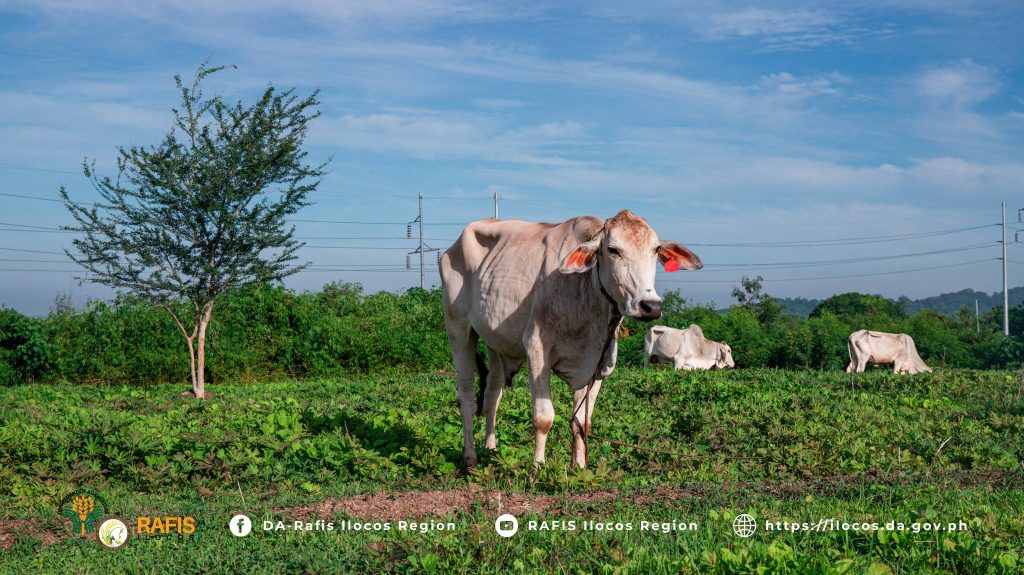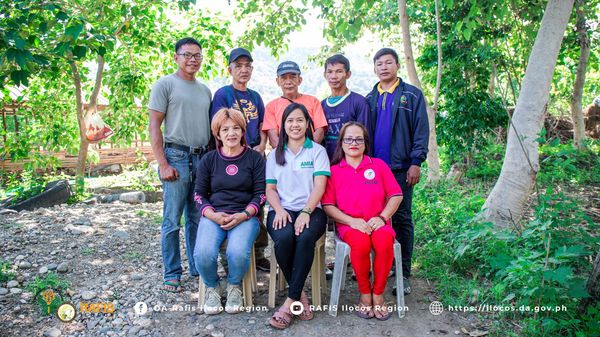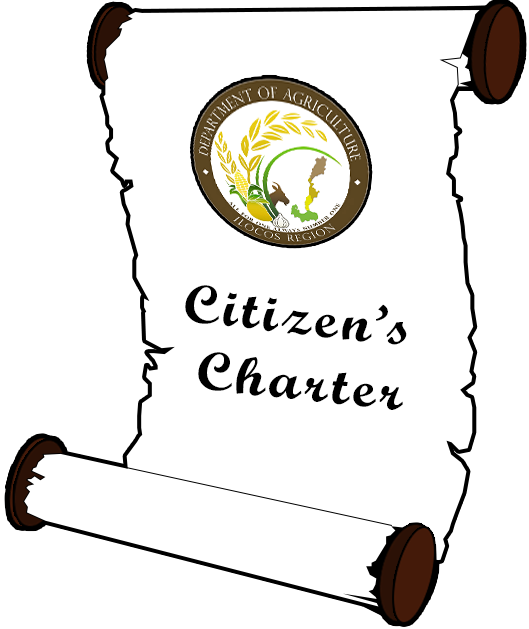
Under partly cloudy skies, over eleven kilometers from Sison Town Proper, across the Aloragat River lies the Manangan Ranch, in Sitio Liaban, Barangay Calunetan, Sison, Pangasinan—the home of the 𝗖𝗮𝗹𝗶𝗮 𝗚𝗮𝘄𝗶𝘀 𝗙𝗮𝗿𝗺𝗲𝗿𝘀’ 𝗔𝘀𝘀𝗼𝗰𝗶𝗮𝘁𝗶𝗼𝗻.
After almost three years, the RAFIS team, or Regional Agriculture and Fisheries Section, with the invitation of the AMIA, the Adaptation and Mitigation Initiative in Agriculture, of the DA-RFO1, or Department of Agriculture Regional Field Office One, returned to the ranch for the next chapter of the association’s story.
Upon the first trek into the dirt roads, the life of the ranch showcased its beauty to the team. Cattle peered curiously at the visitors as they had their breakfast of fresh, green grass sprinkled with dew from the misty morning. Twenty cattle heads, given as part of the AMIA intervention on June 20, 2023, wander the fifty-seven-hectare land of the association owned by Calia Gawis Farmers’ Association President Mr. Danilo Manangan.
Despite the drought that struck the country recently, greens covered the lands as the seeds from previous interventions had grown into various crops such as rice, eggplants, chili peppers, tomatoes, and bitter gourds. Said crops were fertilized by previous intervention: vermi-composting, armed by composting agent African Nightcrawlers, assuring the farmers’ cost-cutting for fertilizers as they learned to make some of their own for free. With the aid of machinery such as hand tractors and harvesters, the association saw more profits in their crops.
These crops also gave way to more products and source of income for the Calia Gawis Farmers’ Association through the use of food processing interventions from the AMIA program to make products such as vinegar and chili oil.
By the time noon started to peek, chickens roamed and clucked under the blue skies, making sure to have their fill of worms and insects from the healthy ground, taking their time munching and interrupting the team’s interviews with happy trills. Mr. Virgilio Manangan, business manager of the Calia Gawis Farmers’ Association, mentioned that they are now descendants of Rhode Island Red Chickens mixed with native chickens, exponentially populated further by egg incubators provided to the association.
Goats, carabaos and pigs were held in their own pens, gazing at the cameras with their wary stares, or perhaps some familiarity as they were once documented as interventions, the sun reflected in their eyes the same way it did the day they came.
The Calia Gawis Farmers’ Association found profit in their livestock, making use of meat grinders and steel tables to sell animal products. With this, they plan to take care of more livestock, ensuring that the drought and the problems that came along with it can be mitigated through the use of solar-powered water systems and finding other forages in their rich lands, making sure that their farm animals are taken care of despite the unpredictable skies.
All of these are solidified by various trainings for the Calia Gawis members, allowing them to adapt to the ever-changing weather with the help of interventions given by the AMIA. As one of the AMIA sites in Region One, the Calia Gawis Farmers’ Association serves as an inspiration for other sites in managing and taking care of interventions to thrive in the world’s unpredictable climate changes.
For all the interventions and trainings provided, he also gratefully stated, “Sa DA-AMIA, nagpapasalamat po kami sa assistance na binibigay po nila sa amin lalo na sa mga interventions, sa pagprocess ng mga requirements, at lalong lalo na sa mga machineries. Napakalaking tulong ng DA at AMIA at ang kanilang mga trainings. Dahil sa kanila, nag-upgrade po talaga ang pagsasaka.”
When asked how they are doing in terms of adapting to the times, Mr. Virgilio Manangan honestly confessed, “Nasa starting point pa lang kami, pero ang masasabi ko po ay nag-improve na kami pagdating sa adaptation at mitigation (through AMIA interventions and trainings).”
Against the changing weathers, sun, clouds, rains, and storms looming over the 57-hectare Manangan Ranch of the 62 members of the Calia Gawis Farmers’ Association, Mr. Manangan assured that through trainings and further interventions, they were able to understand climate change and use more systematic approaches.
As they say, life is ‘weather weather lang’ but with the help of interventions, trainings, and, of course, the association’s hard work, they aim to thrive and for their members to not only be climate resilient farmers but also successful and innovative entrepreneurs, truly making them a model for other sites to look up to.#
❅

